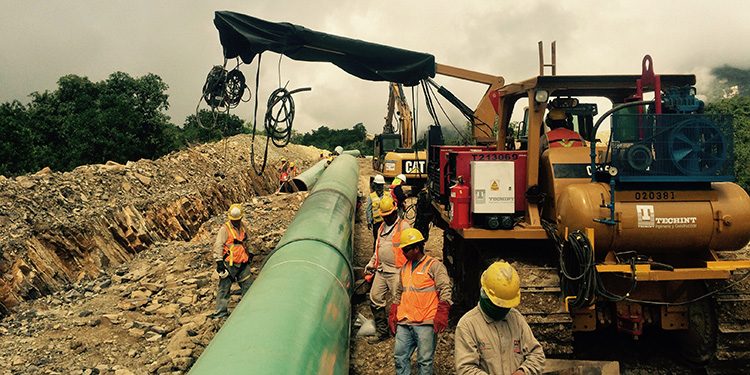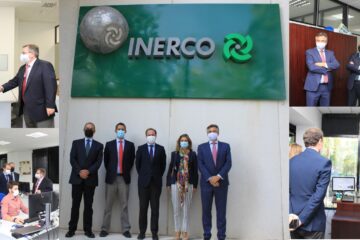INERCO’S EXPERIENCES OF THE HUMAN FACTOR TO REDUCE WORKPLACE ACCIDENT RATES IN LATIN AMERICA

Safety and Health at Work has historically been a discipline in which legislative regulation has made a difference towards the actions taken by most companies. Thus, subsequent legislative precepts introduced the need to undertake the identification of dangers, risk assessment and hygiene, ergonomic and a great many more assessments.
Something similar has happened with legislation in the area of serious accidents—the SEVESO directive or COMAH in Europe—, which included the need to undertake Safety Studies, an Effects and Consequences Calculation, Quantitative Analysis of Risks and assessments such as HAZOPs, What if, FMECA, etc. Businesses were undertaking different studies and assessments with their own staff or with external consultants, a great effort which, despite everything, did not assess to what extent it impacted on the real improvement of the safety and health of workers.
Since well into the 1990s, different voluntary initiatives have made their way into multinational Industrial Corporations, whose efforts focussed on improving accident rates and improving safety: the Programmes of excellence in Safety Management and Behaviour-Based Safety (BBS). These programmes did not compete with the studies undertaken to abide by the law, rather they supplemented them. The management of operational safety was useful, as well as complying with legislation.
After several years during which the two approaches have coexisted, relevant new developments are being produced:
- the new ‘results-driven’ orientation of the legislation, which is increasingly establishing the main obligation of the employer as avoiding harm to the safety and security of workers and neighbouring communities.
- a certain stagnation of BBS methods in relation to the workplace accident rate, which needs to be reorganised in order not to lose its effectiveness.
- the need to apply methods focussing on the worker as a potential generator of accidents not only work-related, but also catastrophic, which opens up a route between safety and health at work and industrial safety.
INERCO has developed different experiences within this new approach in Europe as well as in Latin America, with remarkable success:
New Behaviour-Based Safety Programmes: the BBS programmes have demonstrated their clear usefulness for the reduction of accidents. However, their implementation is suffering in many cases from a lack of adaptation to the company reality as well as to the evolution of the accident rate. This is leading to a base level of accidents that is very difficult to reduce in companies with these types of programmes.
Our vision of the BBS programmes distinguishes an annual assessment which raises awareness about what stage the safety management of the Company is at, its priorities to attend to and which elements we must impact upon in order to reduce the accident rate, avoiding surges.
Furthermore, in order to achieve the aspired effectiveness we reduce the unit of analysis to the specific section —from work posts to Units, Departments, Sections or Factory, etc.—, and we evaluate in each case the factors that really influence the accident rate. Thus, we are able to identify critical behaviour, technical measures of signposting, authorisations, supervisions, training etc. to implement that minimise the significance of behaviour as a generator of harm.
Our experiences in Latin America also have the advantage of a common language and better cultural affinity. The BBS programme developed for a train carriage construction company in Mexico is particularly relevant. Only the actions of training in safe behaviour lead to accident rate reductions higher than 40%.
Investigating Accidents and Human HAZOP: It is essential to carry out a correct diagnosis before planning preventative actions. In this area, we describe two of the most relevant actions: Human HAZOP and accident investigation.
Regarding Human HAZOP, it was developed for work posts at on shore exploration installations and oil product distribution logistical installations in Peru. Human HAZOP is currently the most systematic technique for identifying human errors. For its development, they identified the critical tasks in which human error would have the potential to cause catastrophic damage to the installations or serious workplace accidents, in routine operations as well as maintenance actions or emergency situations.
For each of these critical tasks, the possible deviations –human errors– were identified, evaluating their consequences and identifying the available safeguards, determining the corrective measures that should be implemented. When proposing measures, not only organisational but also technical measures were evaluated: indicators, control systems etc.
The development of risk assessment methodologies that assume the potential of the worker as generator of catastrophic accidents consists of a novel approach that links industrial safety with occupational safety and health. Its rewards fill a gap in the area of industrial safety which, for the most part, considers human error as a black box that is not often opened, owing to the absence of methodology. INERCO’s experiences in Latin America and in Europe we understand that they imply a very significant advance in this area.
Sadly, it is not always possible to anticipate the occurrence of an accident. In these cases, it is essential, at least, to learn from the event, trying to identify the root causes and implement the lessons learned in order to mitigate its repetition. In terms of accident investigation, INERCO has carried out the training of the elite body of accident investigators from one of the most important electricity distribution state corporations in Latin America, training that was included within the set of actions developed by the company to reduce the workplace accident rate, in the framework of the Zero Accidents goal.
The training was designed as a process that was carried out in two stages. In the first stage, initial training was addressed for more than 400 specialists in accident investigation, involving 16 courses, each one 32 hours in duration, which included theoretical training as well as practical workshops.
The second phase put together the body of elite investigators, selecting its 130 members according to the qualifications obtained in phase I. The training of this second phase —with 50 additional hours—, consisted of the investigation of five cases of real accidents, always applying more than one method.
The assessment of the courses has been very satisfactory, for the technical training of the investigators as well as the level of awareness about the main risk factors and measures to avoid them, not only in material conditions but also from an individual perspective.
In this way, the participatory dynamic followed, the credible recreation of the circumstances of the accidents and the formation of a team of mixed monitors —INERCO members and technicians from the company itself—have been key to their success.
As you can see, the proposed methods are tools that really enable us to take a qualitative leap in the improvement of the rate of workplace accidents, a challenge for this field of the consultancy that continues to progress thanks to the commitment of companies and workers.







No Comment